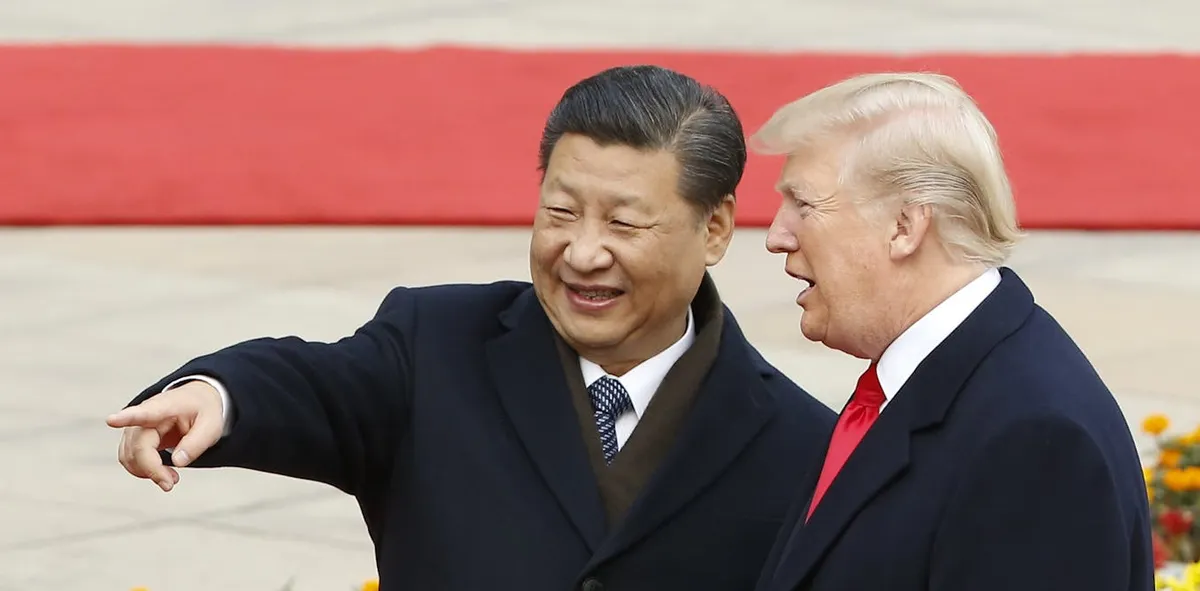
In a surprising move, Donald Trump decided to scale back his initial plan to impose significant tariffs on U.S. trading partners globally, with one notable exception: China. While countries around the world were granted a 90-day reprieve from additional duties beyond the newly established 10% tariffs, China faced a substantial increase in tariffs. On April 9, 2025, Trump escalated the tariff on Chinese goods to an imposing 125%. He justified this aggressive action by citing Beijing's “lack of respect for global markets.” However, this decision may have stemmed from China's readiness to confront U.S. tariffs head-on.
Unlike many other nations that opted for negotiation and dialogue rather than retaliation, China swiftly reacted to Trump's tariffs. On April 11, China dismissed Trump's moves as a "joke" and retaliated by raising its own tariffs on U.S. goods to 125%. This escalation has resulted in a high-stakes trade standoff between the two largest economies in the world, and indications suggest that China is not willing to back down.
In contrast to the initial U.S.-China trade war that commenced in 2018, when China actively sought negotiations, the current environment is markedly different. China now perceives itself as having greater leverage. The significance of the U.S. market to China's export-driven economy has notably diminished. Back in 2018, exports to the U.S. represented 19.8% of China's total exports; by 2023, this figure had plummeted to 12.8%. This shift may accelerate China's strategy of expanding domestic demand, empowering its consumers, and fortifying its internal economy.
Furthermore, while China entered the 2018 trade war during a phase of strong economic growth, the current scenario presents a different challenge. Sluggish real estate markets, capital flight, and the West's “decoupling” from China have contributed to a prolonged economic slowdown. Interestingly, this downturn might have equipped the Chinese economy with resilience against external shocks, compelling businesses and policymakers to adapt to harsh economic realities long before Trump's tariffs came into play.
Moreover, Trump's tariff policy could serve as a convenient scapegoat for Beijing, enabling the Chinese government to rally public sentiment and attribute the economic slowdown to U.S. aggression. China recognizes that the U.S. cannot easily replace its dependence on Chinese goods, particularly within its supply chains. Despite a decrease in direct U.S. imports from China, many products now sourced from third countries still rely on Chinese components or raw materials.
China possesses several strategic tools to retaliate against U.S. tariffs. It dominates the global rare earth supply chain, which is crucial for military and high-tech industries, supplying approximately 72% of U.S. rare earth imports. On March 4, China added 15 American entities to its export control list, including defense contractors and high-tech firms reliant on rare earth elements.
Additionally, China can target vital U.S. agricultural exports, such as poultry and soybeans, which are heavily reliant on Chinese demand and concentrated in Republican-leaning states. China accounts for nearly half of U.S. soybean exports and about 10% of American poultry exports. On March 4, Beijing revoked import approvals for three major U.S. soybean exporters, signaling its readiness to retaliate.
Several U.S. companies, including Apple and Tesla, remain deeply tied to Chinese manufacturing. The imposition of tariffs threatens to significantly reduce their profit margins, and Beijing is likely to leverage this against the Trump administration. Reports indicate that Beijing is preparing to exert regulatory pressure on U.S. companies operating in China, further complicating the trade dynamics.
While Beijing believes it can withstand Trump's tariffs on a bilateral basis, it also recognizes that the U.S. approach toward its trading partners has created a unique opportunity to challenge American dominance. This shift could significantly alter the geopolitical landscape in East Asia. For instance, on March 30, following Trump's initial tariff increases, China, Japan, and South Korea engaged in their first economic dialogue in five years, expressing intentions to advance a trilateral free trade agreement.
From China's perspective, Trump's actions present an opportunity to diminish U.S. influence in the Indo-Pacific region. Furthermore, Trump's steep tariffs on Southeast Asian countries may inadvertently push these nations closer to China. Following the announcement of retaliatory tariffs, Chinese media reported that President Xi Jinping would visit Vietnam, Malaysia, and Cambodia to foster deeper cooperation with these neighboring countries.
On a broader scale, Trump's tariff strategy has also prompted discussions between China and officials from the European Union regarding strengthening their trade ties, potentially undermining the transatlantic alliance that had sought to decouple from China. On April 8, the President of the European Commission held a call with China's Premier, where both parties condemned U.S. trade protectionism while advocating for free and open trade.
China views Trump's tariff policy as a potential threat to the international standing of the U.S. dollar. The widespread imposition of tariffs has shaken investor confidence in the U.S. economy, leading to a decline in the dollar's value. Traditionally regarded as safe-haven assets, both the dollar and U.S. Treasury bonds are now facing scrutiny amid market volatility.
While Trump's tariffs are likely to inflict damage on segments of the Chinese economy, it appears that China possesses more cards to play this time around. The strategic opportunity presented by Trump's all-out tariff war may enable China to inflict significant harm on U.S. interests while simultaneously reshaping its global standing.